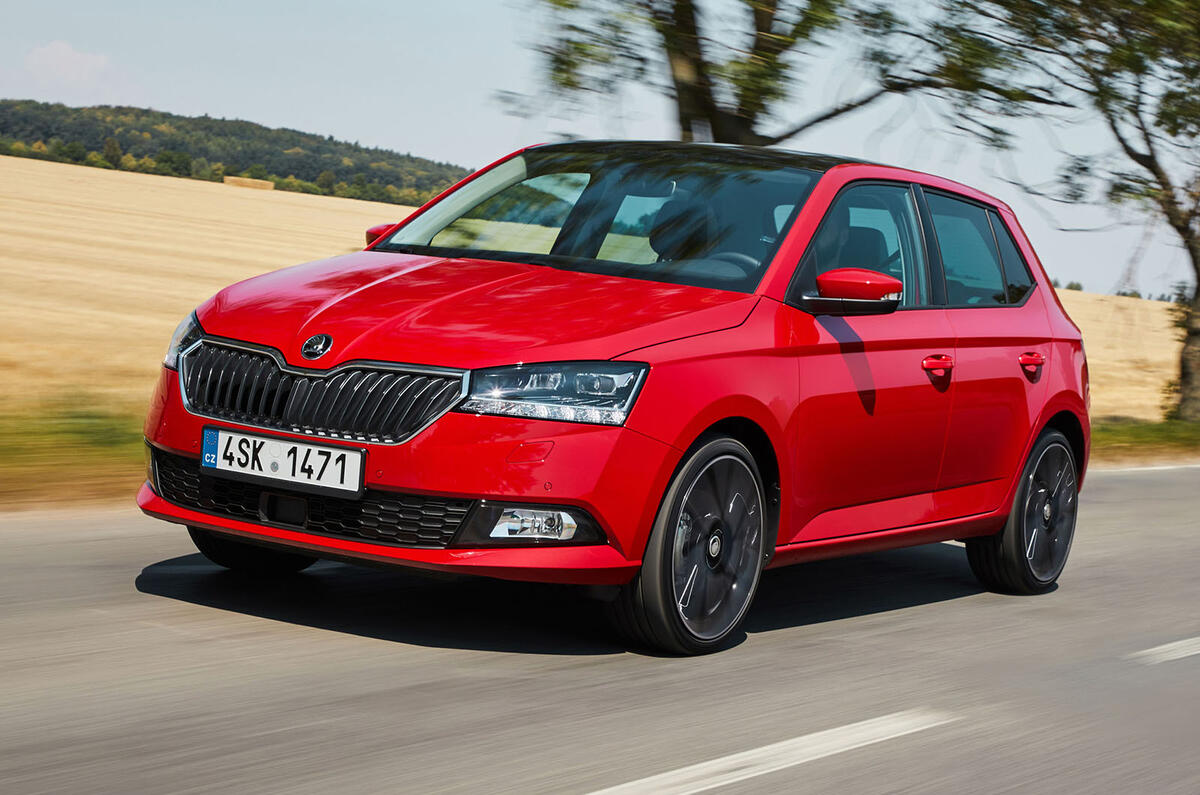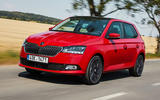What is it?
In the context of its immediate Volkswagen Group rivals, the latest Skoda Fabia supermini could almost be seen as something resembling the youngest sibling.
While the likes of the Seat Ibiza and Volkswagen Polo have been treated to total overhauls, complete with newfangled MQB-A0 platforms, upgraded tech and sharp new exteriors, the third-generation Fabia — which has now been facelifted for 2018 — is still, to an extent, kicking about in last year’s hand-me-downs.
Beneath that subtly revised exterior, including new headlights and bumpers, as well as a new front grille, sits the older PQ26 platform that’s underpinned the Mk3 Fabia since it entered production in 2014. It’s something of an amalgamation of the PQ25 platform used by the likes of the Mk5 Volkswagen Polo and the now ubiquitous MQB platform,
This means there’s the same MacPherson strut front and torsion beam rear suspension arrangement in the pre-facelift Fabia, while power comes from a line-up of 1.0-litre three-cylinder TSI and MPI petrol engines. All of these powerplants now benefit from upgraded engine management systems and a second catalytic converter, while the TSI units also gain petrol particulate filters.
With no go-faster vRS model on offer — or even on the cards, for that matter — power outputs are decidedly modest. The two MPI engines range from 59bhp to 75bhp, while the TSI units come in 94bhp and 109bhp flavours. For the purpose of this European first drive, we opted for the 94bhp unit.










































Join the debate
Add your comment
Disappointing....
As a former owner of a Mk1 Fabia vRS SE, Skoda has lost the plot with the Fabia since. The Mk2 wasn't great - and this version is, whilst better, is still way behind the competition. The lack of a warm/ hot performance variant has surely lost customers?
I had the displeasure of
I had the displeasure of driving one of these a 1.4tdi for a few days. It wasn’t great. The engine idled like a route master, the rear suspension has some bizarre trait of squatting down on its rear springs when setting off quick, the gear box was like a wooden stick in a bucket of pebbles, and the interior was miserable and dark and full of hard plastics. How it won car of the year I’ll never know...
Its interesting to compare it
Its interesting to compare it to the Polo reviewed today. Using the older platform and swapping from Diesel to Petrol has resulted in the Fabia being 160KG less heavy.
artill wrote:
The first time in the history of everything that comparing a Polo and Fabia is described as "interesting"!